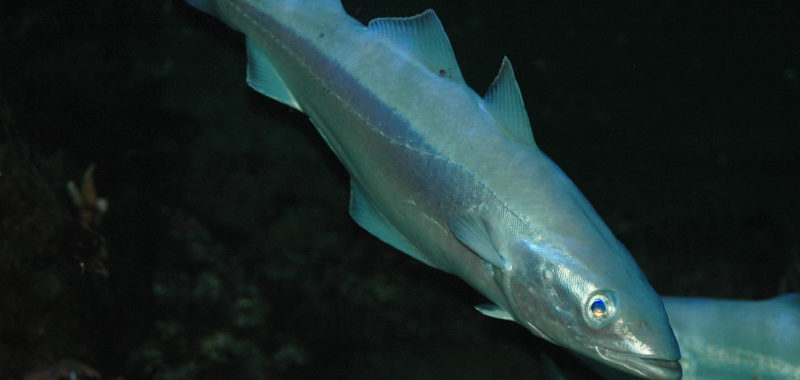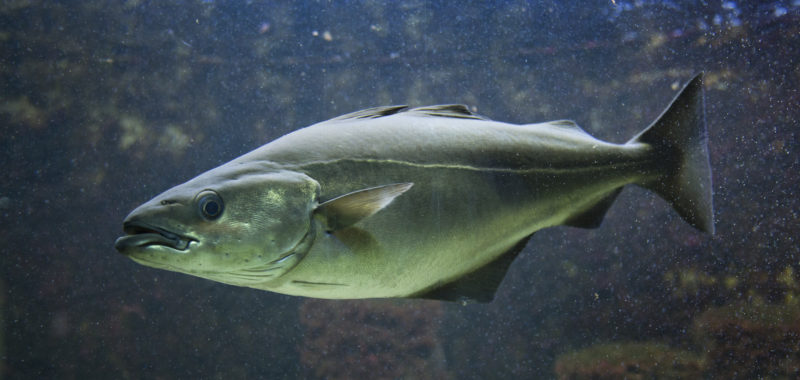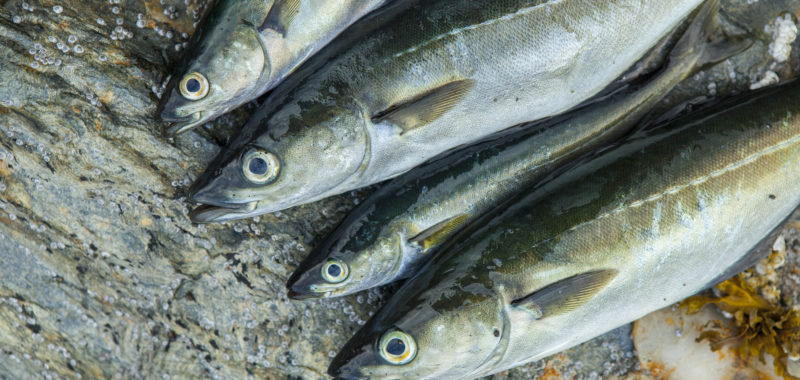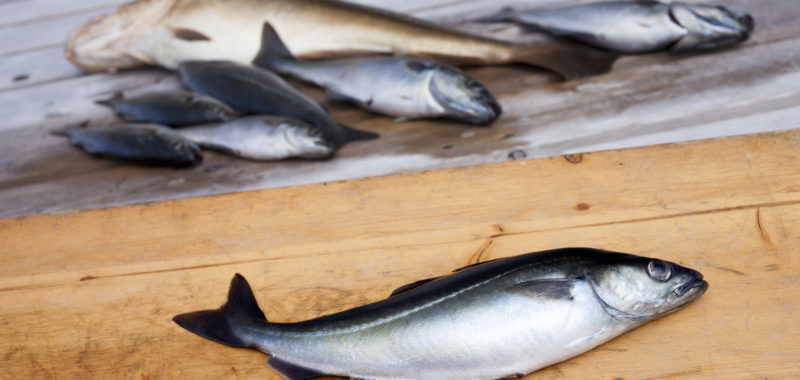Priority Species: Atlantic Pollock
Scientific name: Pollachius virens
DFO Stock Status: Cautious Zone (2/2 stocks), Critical Zone (1/2 stocks)
COSEWIC Status: No COSEWIC assessment
Dive deeper into stock-specific status details.
Seafood Watch
Ocean Wise
MSC – no Canadian certifications
The pollock gillnet fishery includes bycatch of cod and cusk, as well as interactions with endangered species, including Leatherback turtles and North Atlantic right whales. Recent area closures have restricted the pollock gillnet fishery from sponge and coral concentrations on the Scotian Shelf, but it is unclear how these closures might impact the pollock population.
Population: Pollock populations are in the cautious to critical zone, as assessed by DFO. Unfortunately, recent survey indices do not accurately reflect true catch rates or true stock status. Improved data from more accurate research surveys would allow for a better understanding of stock health and more informed stock management.
Bycatch: Improved bycatch monitoring will increase our understanding of the impacts of gillnets on cusk and cod, as well as other marine animals. Switching to gear with lower bycatch rates, such as bottom longlines, would help avoid additional mortality to Leatherback turtles.
Habitat: Some habitat protections have been put in place, but not specifically for pollock. Evaluation of these protections/closures with regards to pollock should be undertaken.
Gear: Low impact gear, such as bottom longline, should be used when possible.
Management: Continue to monitor management plan and evaluation.
Markets: Market demand and distribution for pollock need to be assessed.
Common/Market Name
Atlantic Pollock
Distribution
Scotian Shelf, Eastern Georges Bank and the Bay of Fundy
Harvest Method
Gear types: gillnet, bottom trawl, handline, longline
Management Agency
Department of Fisheries and Oceans Canada (DFO), Maritimes Region, Newfoundland and Labrador Region
Market Distribution
Unknown exports






